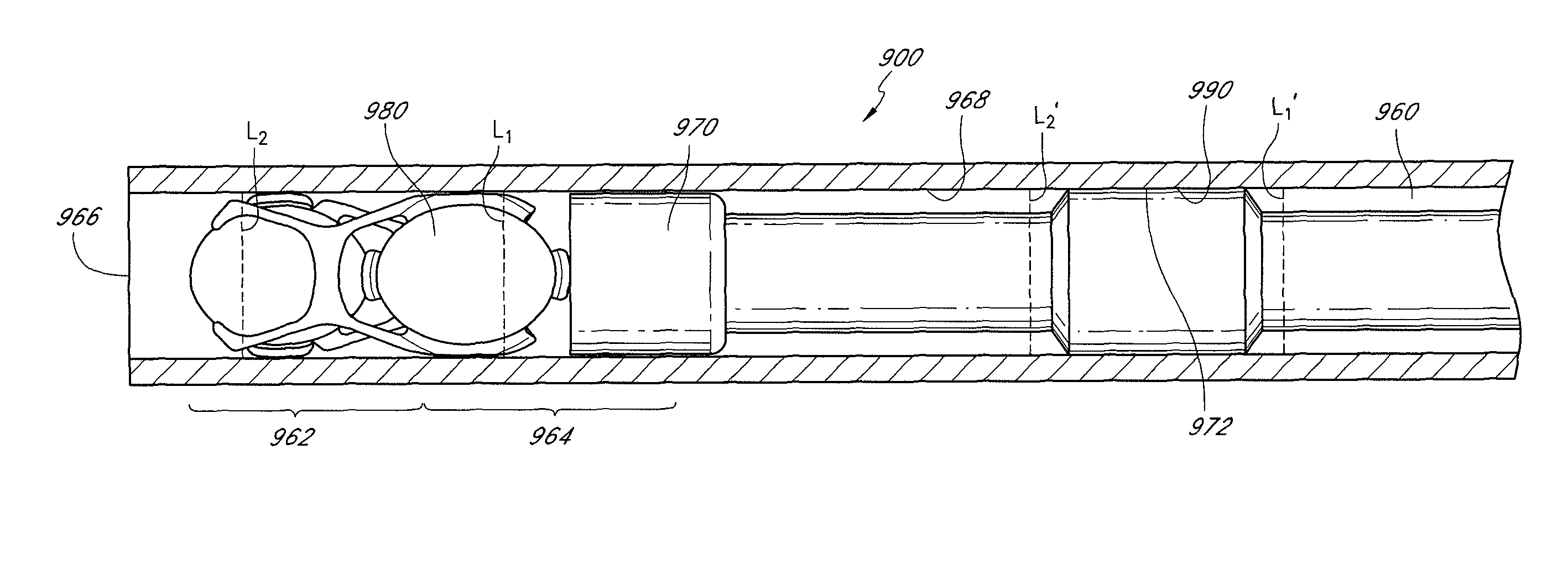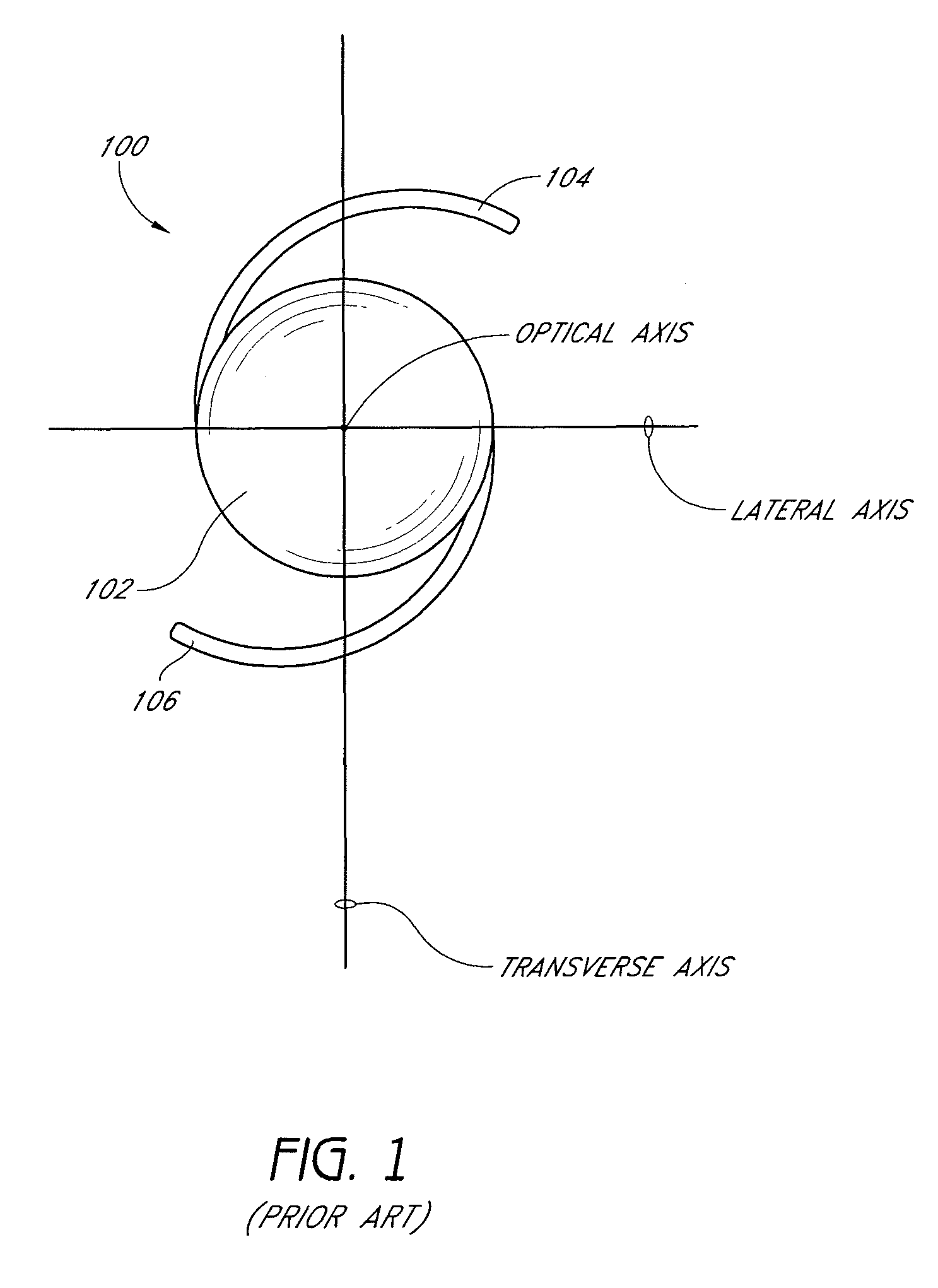Method for inserting an intraocular lens
a technology of intraocular lens and eye, which is applied in the field of intraocular lens insertion, can solve the problems of various drawbacks of known implantation devices, and achieve the effects of slowing down the entry of intraocular lens, preventing further advancement of intraocular lens, and inhibiting the sudden release of mechanical energy
- Summary
- Abstract
- Description
- Claims
- Application Information
AI Technical Summary
Benefits of technology
Problems solved by technology
Method used
Image
Examples
Embodiment Construction
[0081]FIGS. 1 and 2 depict two known types of intraocular lenses (“IOLs”) which are suitable for implantation in a human or animal eye to replace or supplement the natural crystalline lens. An IOL may be implanted, for example, when the natural lens has developed cataracts or has lost elasticity to create a condition of presbyopia.
[0082]FIG. 1 is front view of a conventional single-lens IOL 100 comprising an optic 102 to which are connected two or more haptics 104, 106. The optic 102 typically has a refractive power which is selected to replace or adjust the optical performance of the natural lens. The haptics 104, 106 comprise spring-like members which fix the optic in an appropriate location (e.g., inside the ciliary capsule or between the cornea and iris). The IOL 100 has an optical axis generally orthogonal to and centered on the optic; accordingly, in FIG. 1 the optical axis is depicted as a point. In addition, the IOL 100 has a transverse axis orthogonal to the optical axis an...
PUM
 Login to View More
Login to View More Abstract
Description
Claims
Application Information
 Login to View More
Login to View More - R&D
- Intellectual Property
- Life Sciences
- Materials
- Tech Scout
- Unparalleled Data Quality
- Higher Quality Content
- 60% Fewer Hallucinations
Browse by: Latest US Patents, China's latest patents, Technical Efficacy Thesaurus, Application Domain, Technology Topic, Popular Technical Reports.
© 2025 PatSnap. All rights reserved.Legal|Privacy policy|Modern Slavery Act Transparency Statement|Sitemap|About US| Contact US: help@patsnap.com



